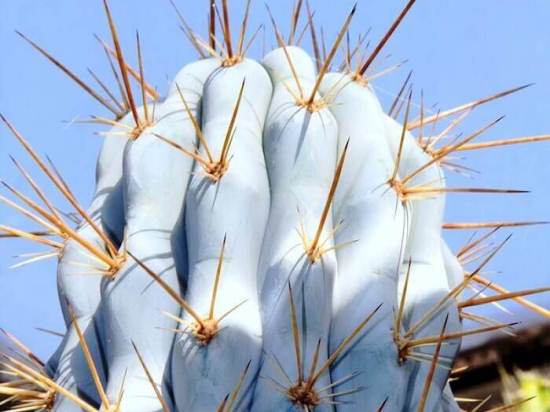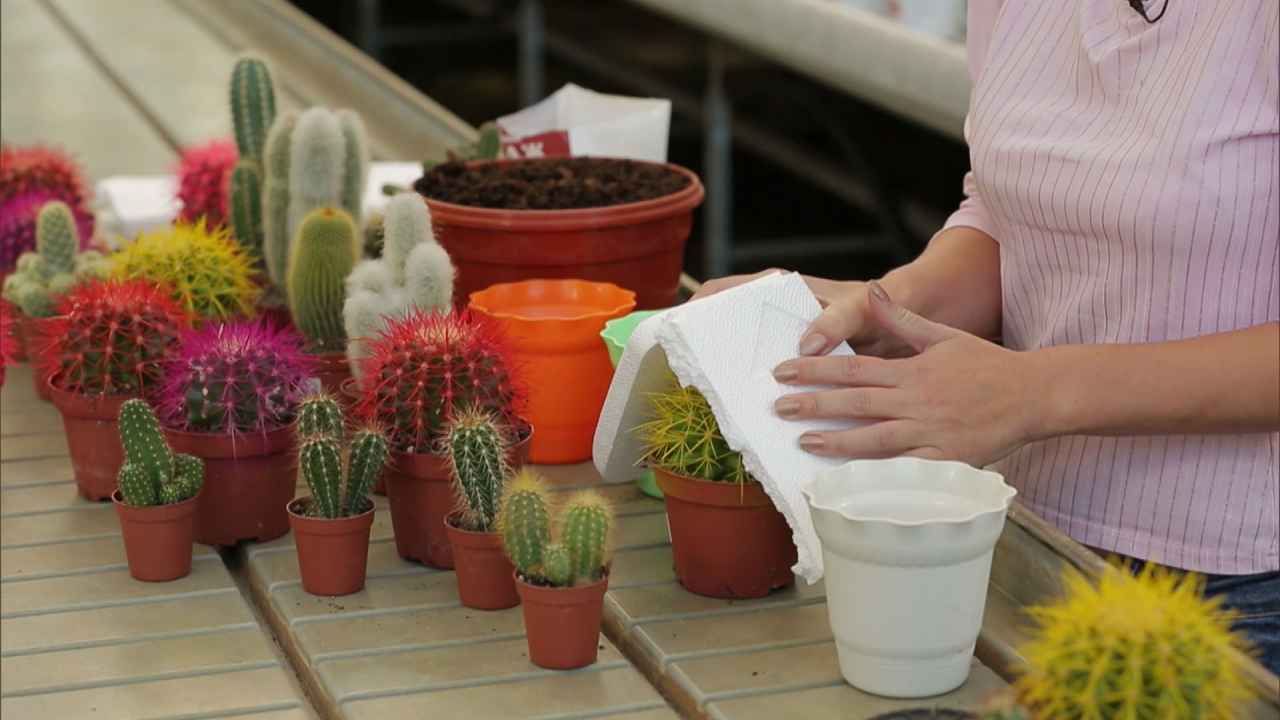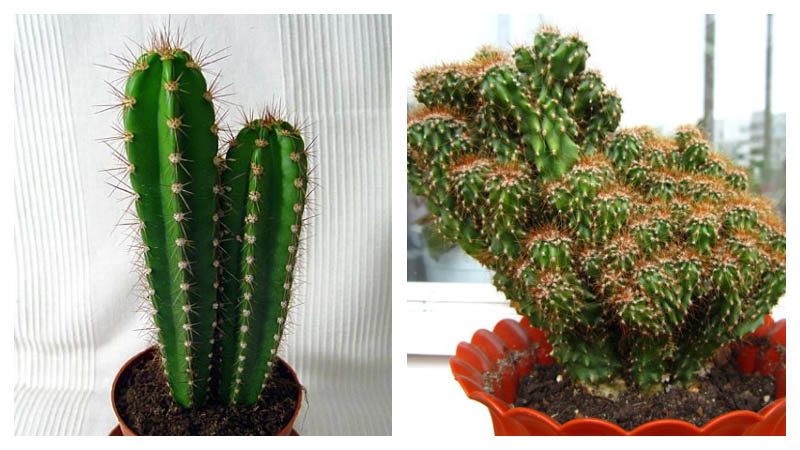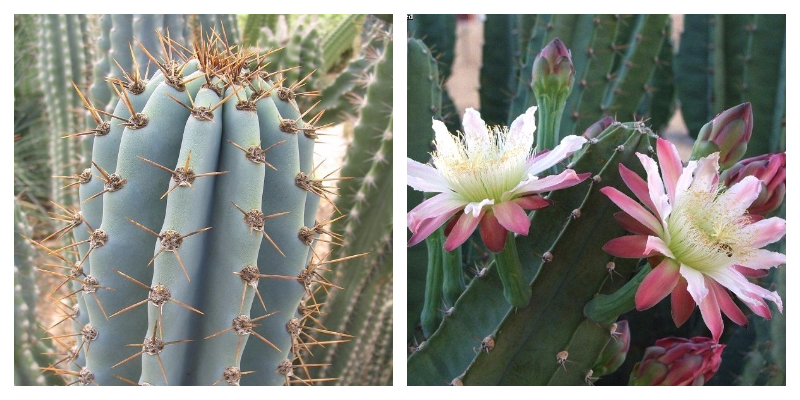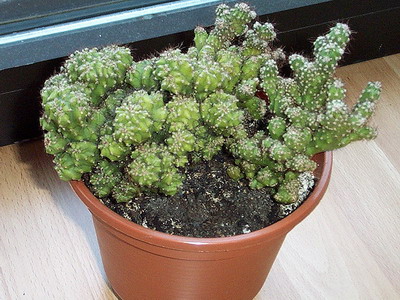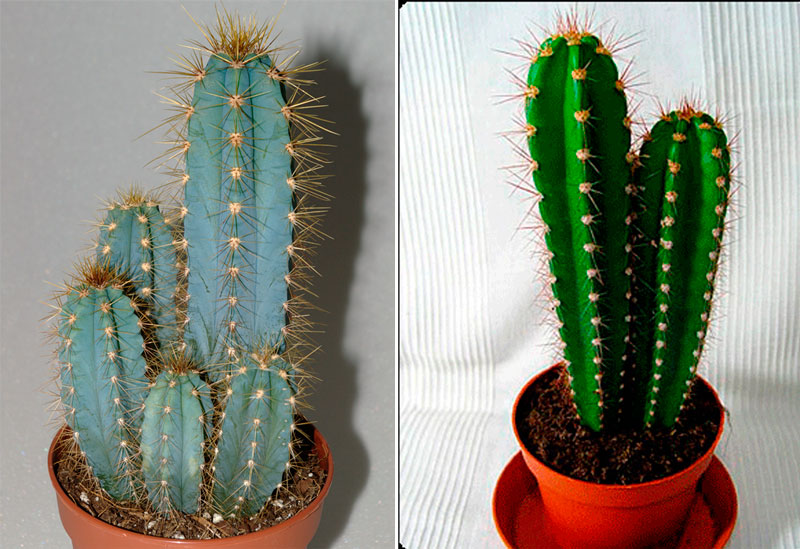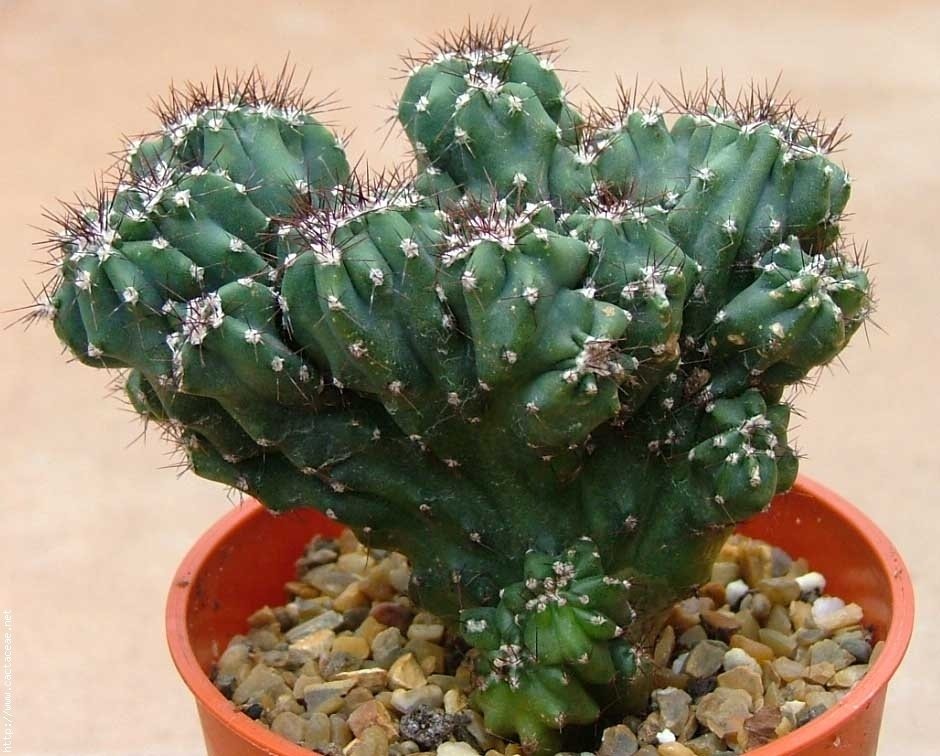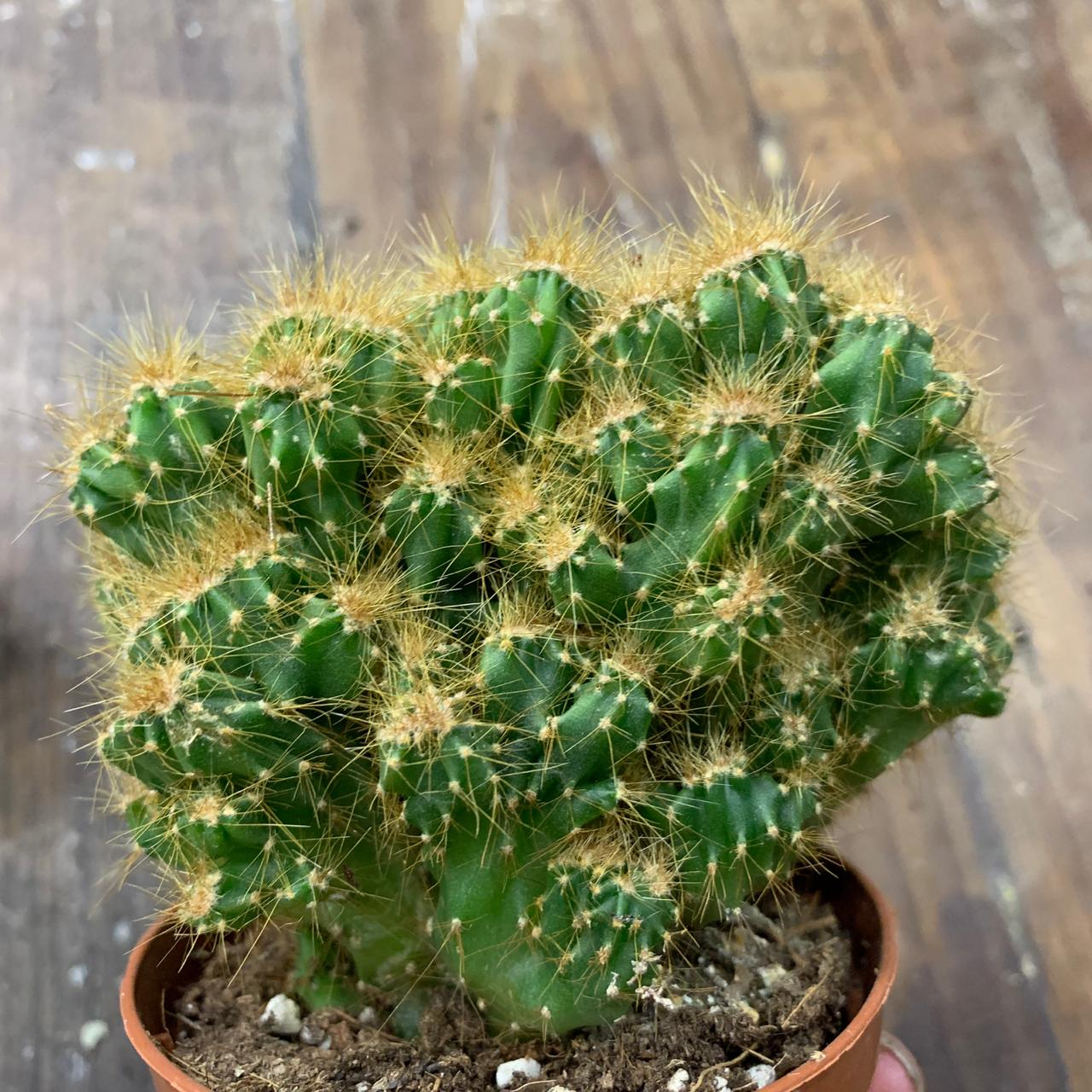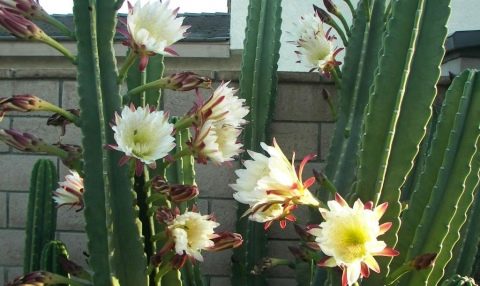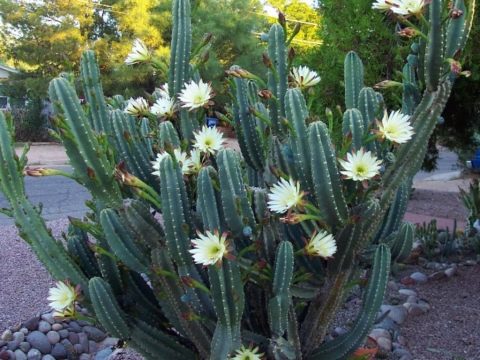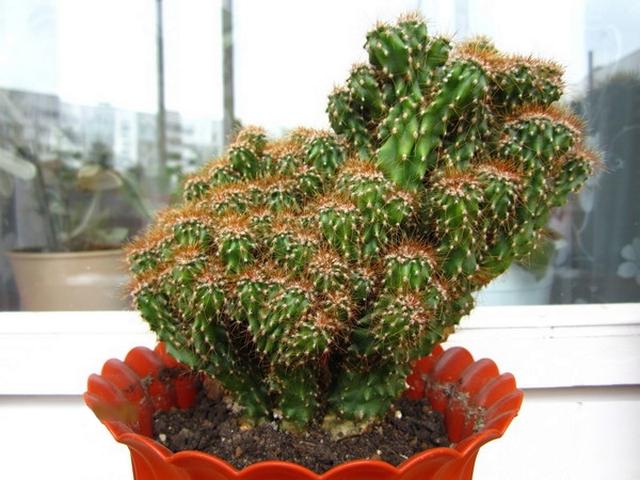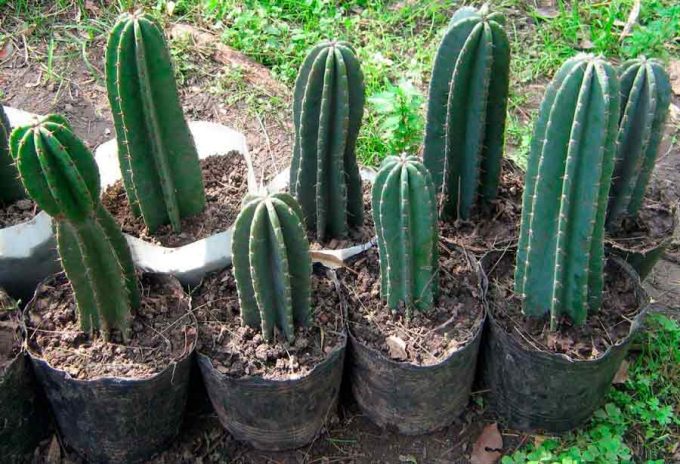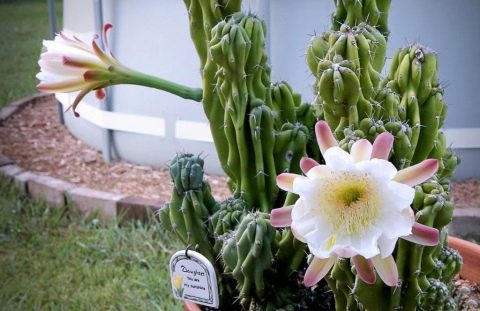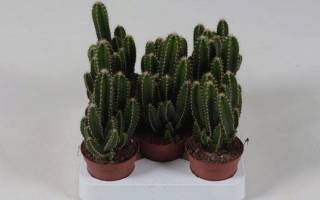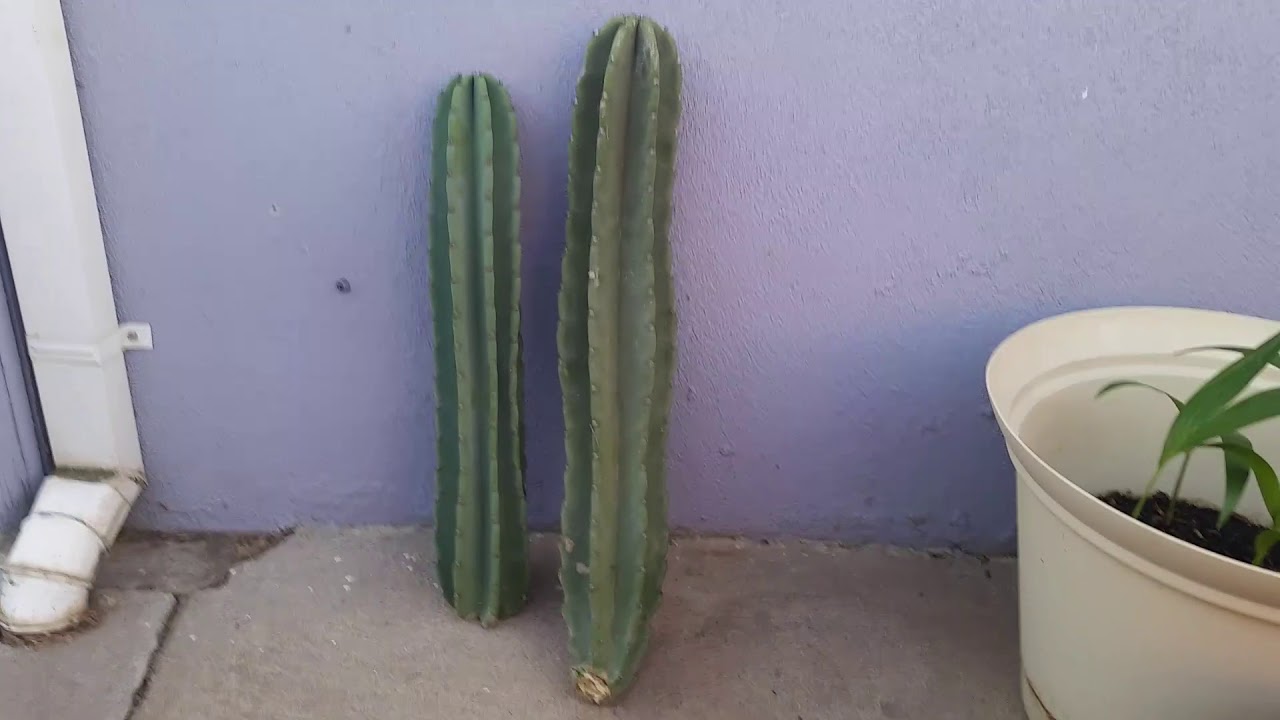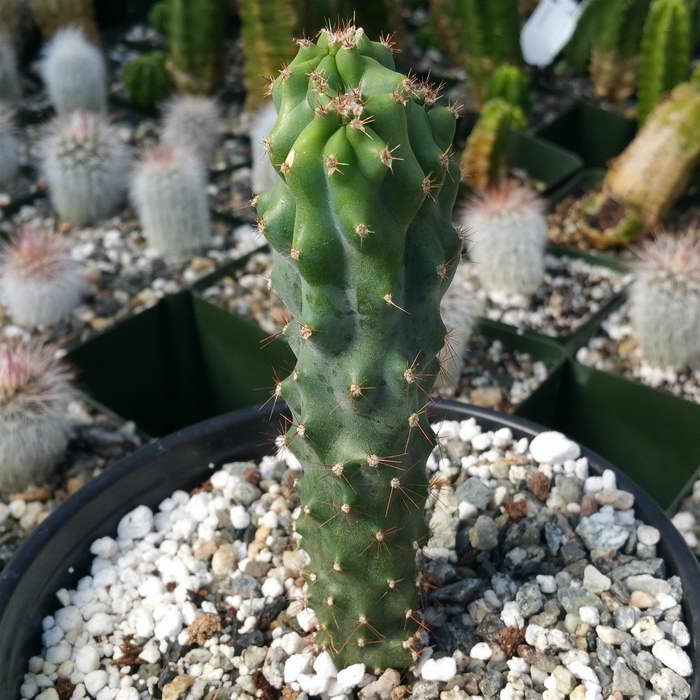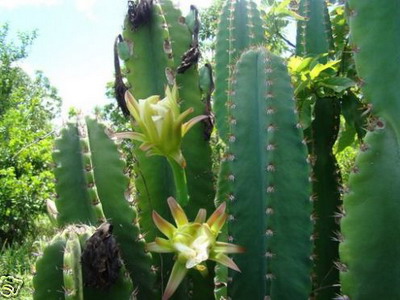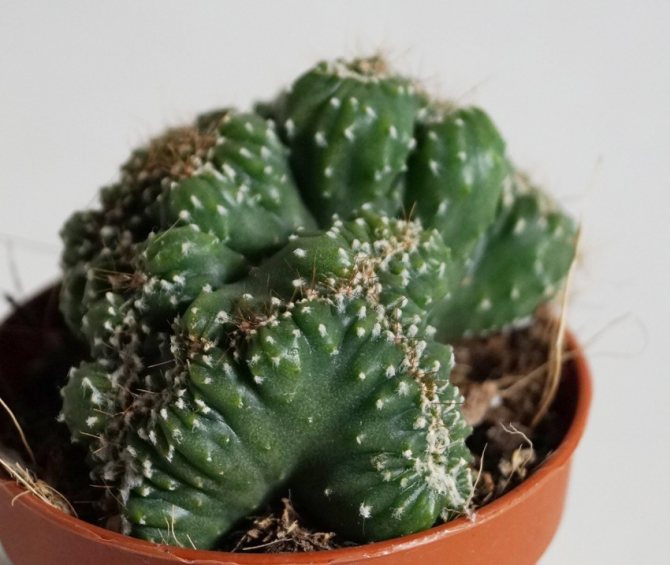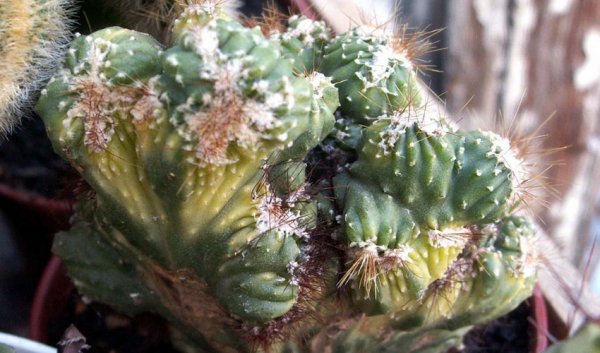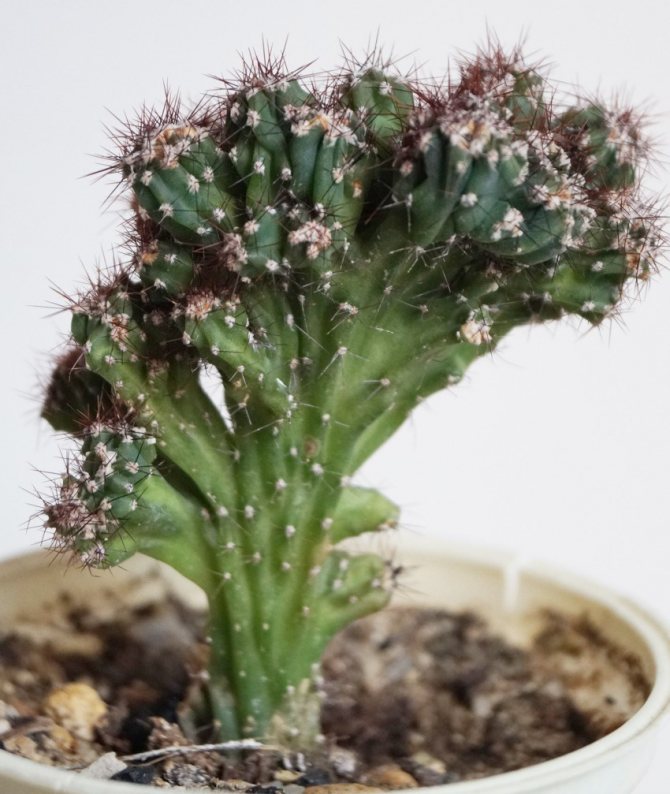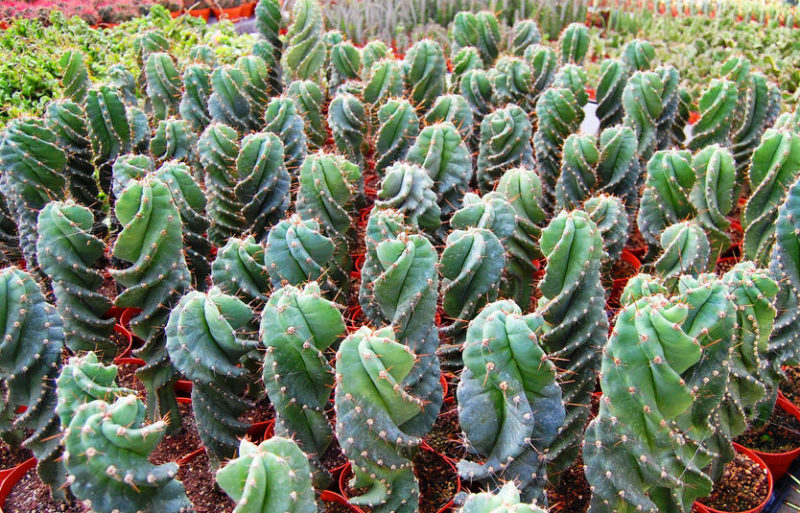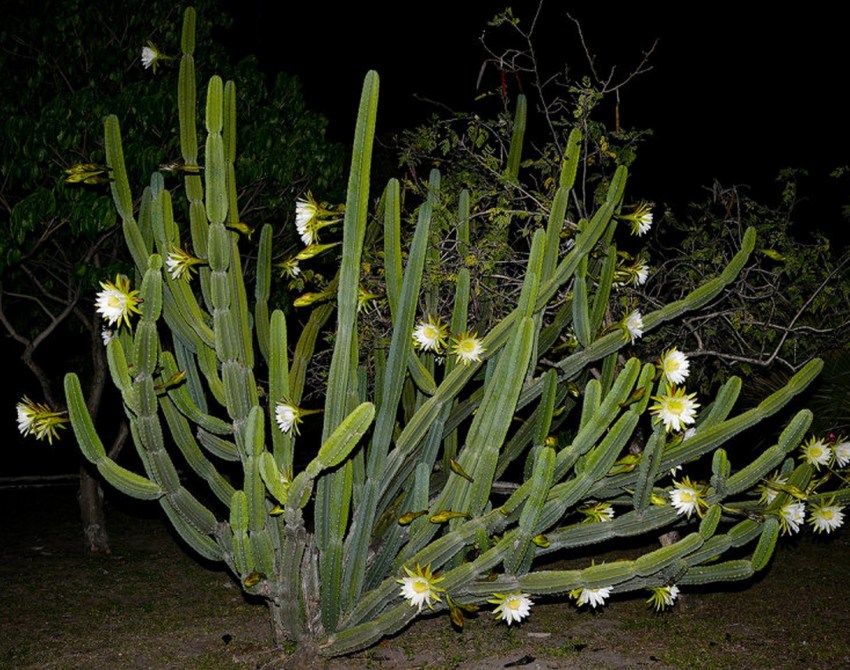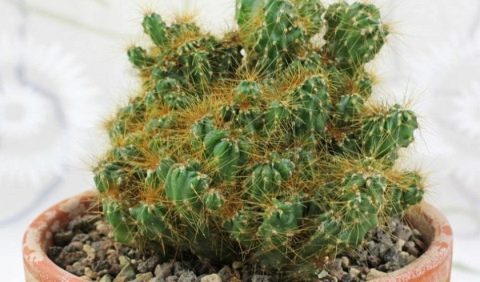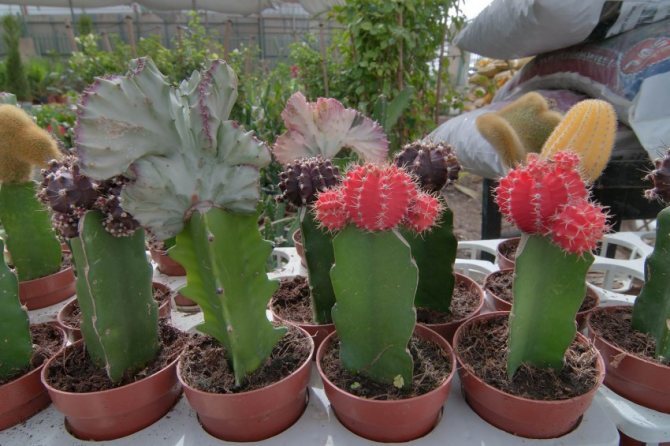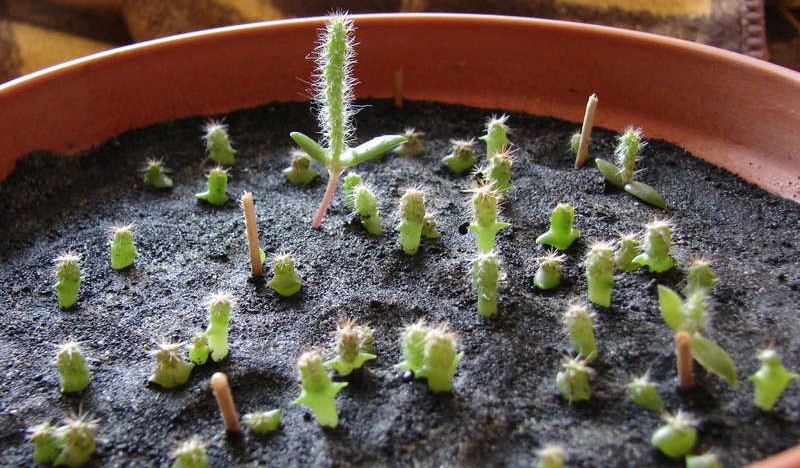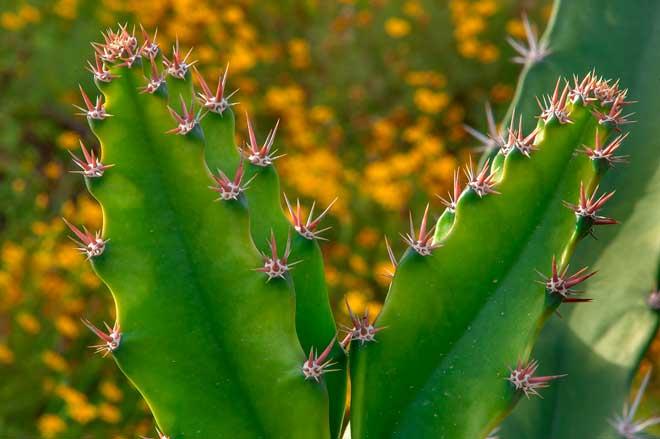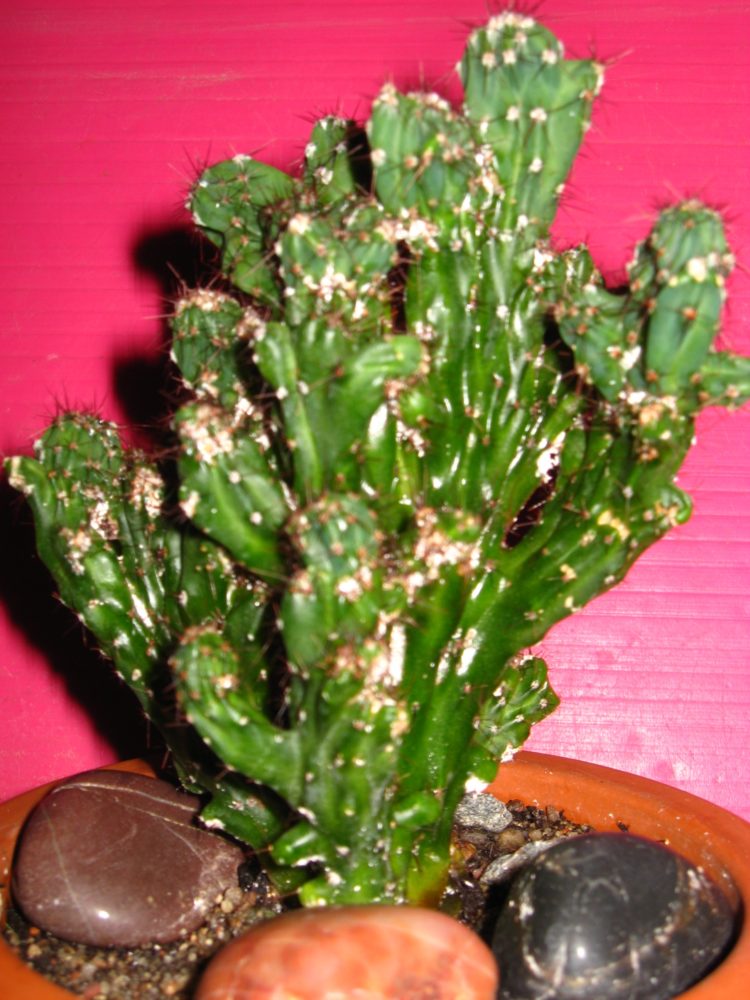Cactus care rules
Follow simple guidelines for plant care.
Watering mode
Echinopsis needs little water at home. In the season of activity, flower growers are advised to water the cactus in meager portions of 2 r. in Week. Moreover, water must be poured in a thin stream onto the top of the plant. Between waterings, the soil should dry out to half the depth. In winter, the procedure may not be carried out at all.
Feeding technique
A special universal fertilizer for cacti and succulents is suitable for Echinopsis. The feeding period is from March to September. Add the mixture at the manufacturer's recommended dose once a month.
Advice. Also, glucose has a beneficial effect on the cactus. Sometimes add a little sugar to the water for irrigation.
Pruning and transplanting procedures
The cactus is not the type of plant that needs pruning. But he needs a transplant without fail. Every year in early spring, a young specimen of Echinopsis is moved into a pot of slightly larger diameter. Adult plants are transplanted every 2-3 years, also in March. They do not need additional space, it is enough just to replace the soil with fresh nutrient.
Operating procedure:
Stop watering 6-8 days before. This will help make the roots resistant to rot and stress after replanting.
Fill the bottom of the pot with a layer of drainage. Add a small layer of prepared soil.
Remove the cactus carefully. Delete the kids.
Place the echinopsis in a new pot. Sprinkle on the rest of the soil
It is important that it does not touch the aboveground green part of the plant.
Use your fingers to lightly compact the substrate around the stem. Water
Cover from direct sun for a few days.
It's important to know! Large old specimens are not transplanted at all. In a pot with them, they simply remove and replace the top layer of soil mixture
The thickness of the renewed soil is 5 cm.
Threat to decorativeness: diseases and pests
If the cactus simply does not bloom, most likely you violated the cultivation technique: you did not keep the Echinopsis cool or did not provide it with good light. Otherwise, study the plant. Perhaps it got sick:
- Darkened areas on a green stem indicate root rot. This happens with regular overflow. Cut off the affected areas and treat the cut with a fungicide.
- A spider web in a pot indicates the appearance of a spider mite. Remove it by hand or treat the plant with insecticide.
Cereus home care
Cereus is a cactus native to South and Central America. Many members of this genus are not suitable for growing in homes due to their oversized size. The same species that are considered indoor plants are popular with cactus lovers for their unpretentiousness and beauty. Cerius Peruvian, Cerius Yamakaru, which are columnar cacti, are grown in apartments.
Some rocky forms of this cactus are also grown, attracting attention with their bizarre shape, but these cacti almost never bloom at home, but reproduce only by cuttings
All cereus love bright sunlight, to which they are gradually accustomed. The room temperature should be moderate. In the summer they enjoy being outdoors. In winter, Cereus are dormant, keep them at a temperature of 10-120C and dry, watering very rarely.
Cereus propagates by cuttings and seeds.
Home care
Cereus is a rather unpretentious plant.
Even a novice florist will be able to learn how to care for him.
Features of care after purchase
Proper plant care begins with transplanting. Unfortunately, many do not pay attention to this and subsequently face problems.Before buying a flower, take care of purchasing a suitable container and substrate in advance.
- The choice of capacity The pot is selected approximately 1 size larger than the previous one. The container should not be deep, but wide. The root system of the flower is weak; drainage must be poured at the bottom.
- Soil selection The best option is to buy a ready-made mixture for succulents and cacti. You can independently prepare the soil from turf and leafy soil (in equal proportions), add brick chips, sand and peat.
Lighting
Cereus loves good lighting.
The best place for a flower in the house is open, light-colored windowsills facing south.
In the summer, in warm, sunny weather, take the flower out into the open air.
To ventilate and bask in the sun.
If there is a lack of light in winter, it is recommended to take care of additional artificial lighting.
The flower reacts negatively to a lack of light.
Please note that the plant is sensitive to a change in environment, to a change in lighting.
Temperature
In spring and summer, Cereus will be comfortable in a room with a warm or moderate temperature (20-25 degrees). In winter, there is a dormant period.
The plant hibernates at a temperature of 14-17 degrees.
Air humidity
The plant does not need additional moisture. Only on hot summer days can you spray it with water to freshen it up a little and remove dust.
Watering
In summer and autumn, watering should be regular, but moderate. The plant does not tolerate a lack of moisture, and an excess can lead to the formation of root rot. In autumn, watering is gradually reduced.
In winter, the flower is not watered.
Fertilizers
In its natural environment, cactus grows on nutrient-depleted soil, so it is well suited for growing without special feeding.
If you want to feed the plant, it is recommended to do this only in the summer and not more often than once every 3-4 weeks.
It is better to use special fertilizers for succulents and cacti.
Bloom
The term falls in the spring and early summer.
For the beginning of flowering, it is especially important to observe proper care during the dormant period. It is recommended to slightly increase the frequency of watering during flowering.
It is recommended to slightly increase the frequency of watering during flowering.
Transfer
Cereus is transplanted in March or early April.
A young plant is transplanted annually, and an adult only as needed (about once every 2-3 years).
Please note that the flower has a very fragile, weak root system. When removing it from the pot, be careful
It is better to transplant an adult plant together so as not to damage it.
Reproduction
Most often, the cactus is propagated by cuttings. Before planting, they are dried for several days, and then dipped into a moist substrate.
The stalk must be secured in an upright position until it takes root.
Propagated by seeds less often. This process takes a lot of time and effort.
Transfer
The number of transplants depends on the growth rate of the cactus breed. Usually the pot is changed once a year or two. The procedure is carried out according to the following scheme:
- Choose a larger pot, it must have sufficient depth.
- Place loose earth mixed with humus in a container.
- Plant a plant, water it abundantly and place it in a well-consecrated part of the house.
After 3-4 days, the Cereus cactus can be fertilized with mineral dressings. Re-watering is done when the soil in the pot dries well. Excessive humidity can damage the root system of the plant culture.

Transplanting a cactus breed
Benefits and Applications
Hilocereus is used as an ornamental plant in offices, lobbies, balconies, or as a garden fence.
Fast growth, large buds and nighttime fragrance give it a special grace that can decorate any place in the house, and thanks to the filamentous roots, the cactus twists around the supports, which looks elegant and neat.
The fruits are also widespread, despite the fact that no one remembered them several decades ago. In cooking, they are used as an independent dish, to add flavor to baked goods, or as an addition to meat. Drinks are also made from pitahaya, including alcoholic ones. The presence of a large amount of antioxidants and vitamins makes dragon fruit extremely beneficial for the human body.
Also, due to its vitality, a cactus can become a stock for other succulents and epiphytes, however, one should take into account the different attitude to low temperatures in different species.
When and how it blooms
In the first year of growth, the shoots of the cereus have a bluish tint. The more time passes, the more they thicken and darken.

Flowering Cereus Peruvian
On the stem of the plant are areoles with thorns (5-6 pcs. In each). In April and May, the cactus begins to bloom. In place of the areoles, cream and yellow inflorescences appear. Their length can reach 16 cm. The leaves of the flowers are covered with barely noticeable scales, they have tubular petals.
As the flowers develop, they acquire a bright red hue. Blooming of buds is observed mainly at night. Further, fruits appear on the branches of the cactus. These are small round berries of a yellow or orange hue.
For reference! The fruits at their ripeness are considered edible - according to the reviews of those who have tried, they have a sweet taste and delicate aroma.
Cactus cereus repandus
Cereus are the most famous columnar cacti. They have long been common in culture, beautiful and undemanding. Of the several dozen species, most are so large plants that they are almost unsuitable for growing in houses, and therefore only a few representatives of the genus are widespread in culture. But unlike cephalocereus, you can even admire the flowering of some species of cereus at home.
The most famous of them - Cereus repandus (C. repandus = C. peruvianas) - can bloom at the age of several years (if grown from a cuttings) at a height of about half a meter.
As you can see in the photo, this Cereus cactus has a flower about 16 cm long, daytime, white:
Types of rocky cereus
Rocky cereus have firmly taken pride of place among common indoor flowers due to their bizarre shape, vitality and longevity. "Rocky" is not a specific or varietal name, but a designation of a growth form. Rocky or monstrous plants are found among the normal plants of many cactus species. But rocky cereus are the most widespread. It is believed that two types of rocky forms are common in culture - Cereus repandus (= peruvianus) and C. jamacaru (yamakaru). However, it is quite probable that forms of other species are found among the "monstrous" diversity. It is very difficult to clarify the species belonging of a particular rocky cereus, since the characters used in taxonomy are practically not expressed in rocky forms.
Caring for Rocky Cereus
Caring for Rocky Cereus Cactus is pretty simple. If you want to get a large plant, the soil should be nutritious, with a slightly higher content of the clay-sod component. Cereus are fast-growing cacti and respond well to abundant watering during the growth period, as well as periodic spraying and watering with a weak solution of mineral fertilizers. The stems of these plants can be washed under running warm water.
Rocky Cereus tolerate prolonged exposure to low light conditions (which is why they are often used in interiors). But for normal development, these plants need a lot of sunlight, especially in summer.At least, at the southern or southeastern window, and better - outdoors or in a greenhouse (however, brought out into the open sun without prior preparation, the rocky cereus can be seriously burned).
Rocky cereus are resistant to diseases and pests, but the complex structure of their surface creates excellent shelters for parasites - ticks, worms, scale insects. Among the numerous branches, tubercles and thorns of arthropod pests, firstly, it is difficult to detect in time, and secondly, it is difficult to destroy not only mechanically, but also with pesticides. But even with decent care for cereus at home, these unusual plants, unfortunately, practically do not bloom in culture.
Diseases and pests
With good, regular care, plant health problems do not arise.
Excessive moisture can lead to the formation of root rot. Insidious disease
It is very important to find it in a timely manner and transplant the flower, otherwise it may die. When transplanting, the roots are carefully examined, washed, cleaned of rot, removed the affected parts, treated with a weak solution of potassium permanganate
It is also recommended to disinfect the pot and fresh substrate.
Sagittarius can be infected with red ticks. It is problematic to clear a cactus from it. It is necessary to carefully process all pits, folds, tubercles. You can process it with a cotton swab dipped in alcohol.
If this does not work, special chemicals can be used.
Cereus is one of the most unusual and popular species grown in domestic culture. It differs not in difficult care, good immunity from pests, unusual exotic appearance. With regular maintenance, the flower can become a real decoration of any modern apartment.

